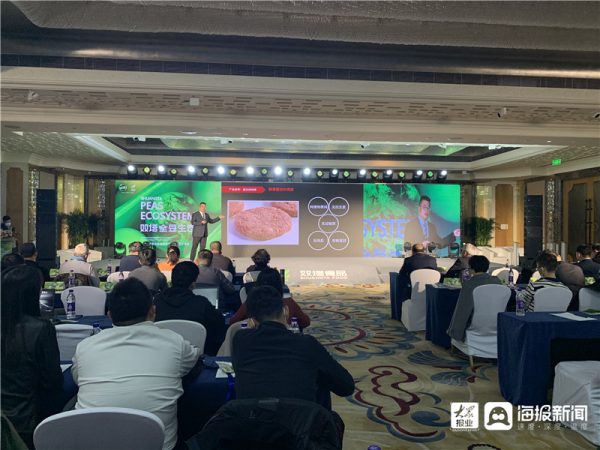As a traditional manufacturer of Longkou fans, Shuangta Foods has developed pea protein and its derivatives through deep cultivation of the industrial chain, tapped the potential value of by-products, and vigorously developed pea protein and its derivatives. The upgrade of meat.
Yang Junmin, chairman of Shuangta Foods, said at the press conference that strong technical barriers and the “1+10” circular economy industrial chain have become the moat for the company’s sustainable high-quality development in the future. The company has entered the pea protein market since 2012. From the initial follower to the leader, to the new launch of vegetable protein meat, Shuangta Foods officially opened a new starting point from a 2B raw material supplier to a 2C brand owner.
It is understood that Shuangta Foods accounts for about 40% of the total production capacity of pea protein in the world. It is the world’s largest producer of vegetable protein meat raw materials. Cargill established a partnership.

Where is the future of plant protein meat? Feng Yunfei, vice president of Megco Creative Consulting Co., Ltd., made a presentation entitled “New Trends, New Opportunities – Analysis and Research on the Development Status and Future Forecast of the Artificial Meat Industry” at the press conference, predicting plant protein Replacing animal protein or becoming a new means of sustainable development. Environmentally friendly, healthy and nutritious vegetable protein meat has a market, space, and no leadership. It is a huge blue ocean market.
Yang Qianqian, director of Shuangta Food and Health Division, said in explaining the company’s future development strategy that vegetable protein meat will become the company’s strategic support for the next ten years and an important growth point for the company in the future. The whole bean ecological strategy is to cultivate a bean in the whole process of ecological cultivation, efficient use of all ingredients, traceable management throughout the whole process, and systematic development of the whole industry chain. Through all-round value development, fully tap all the values contained in peas, realize ecological research and development, ecological cultivation, ecological circulation, and ecological traceability, create a green, healthy and ecological food kingdom, and be a “pioneer of protein-feeding lifestyle”.
Zhang Shucheng, vice president of Shuangta Food Technology R&D, said that the pea protein plant meat series products launched by the company have the characteristics of high protein, full elasticity, firm meat quality, obvious meat texture, and fresh taste. While meeting the needs of different types of food, the concept of health and ecology is integrated into the food culture.
Experts in the field believe that vegetable protein meat is similar to real meat in terms of shape and taste, and can be imitated. At the same time, it has more room for expansion in terms of shape and taste, and has a huge potential market space.
Why Pea Protein?
Among many vegetable proteins, pea protein has the most obvious advantages. First, pea protein has high nutritional value among vegetable proteins. Pea contains about 20% protein, and pea protein has a complete range of amino acids and a balanced structure; second, pea protein has excellent functional properties, such as gelatinity, solubility, emulsifying, water absorption and oil retention, and foaming; third, pea protein has excellent functional properties. Protein itself has obvious advantages such as no allergens, zero cholesterol, low fat, small molecular weight and easy absorption, which is lacking in other plant proteins; fourth, soy protein has a low glycemic index, a high protein index, and a long-lasting feeling of satiety. It has a good preventive effect on common cardiovascular diseases in humans. Fifth, pea protein has less bean smell and has a bland taste. Pea protein is used in plant-based meat products, and its tissue characteristics can enhance the taste and texture of products.
